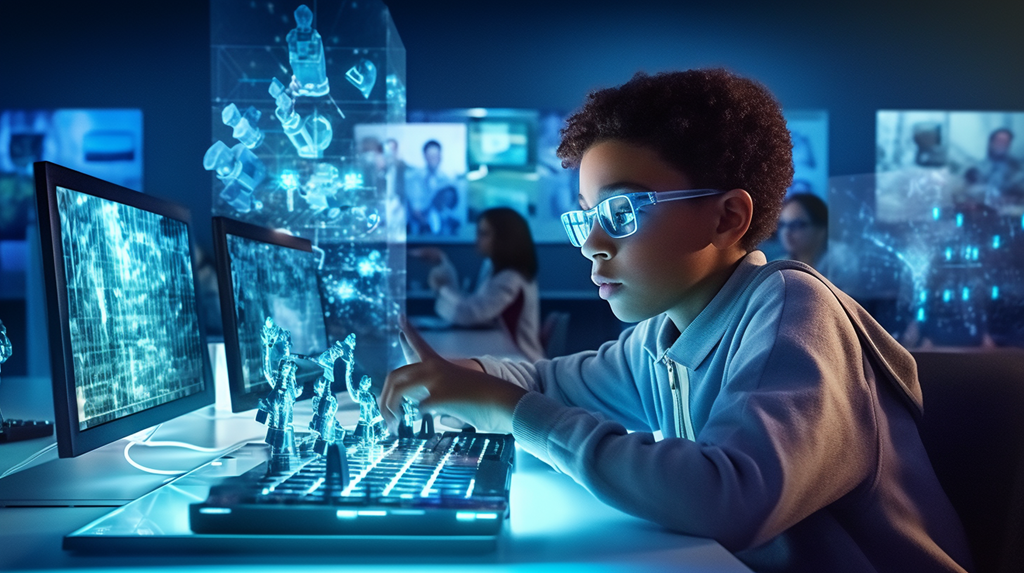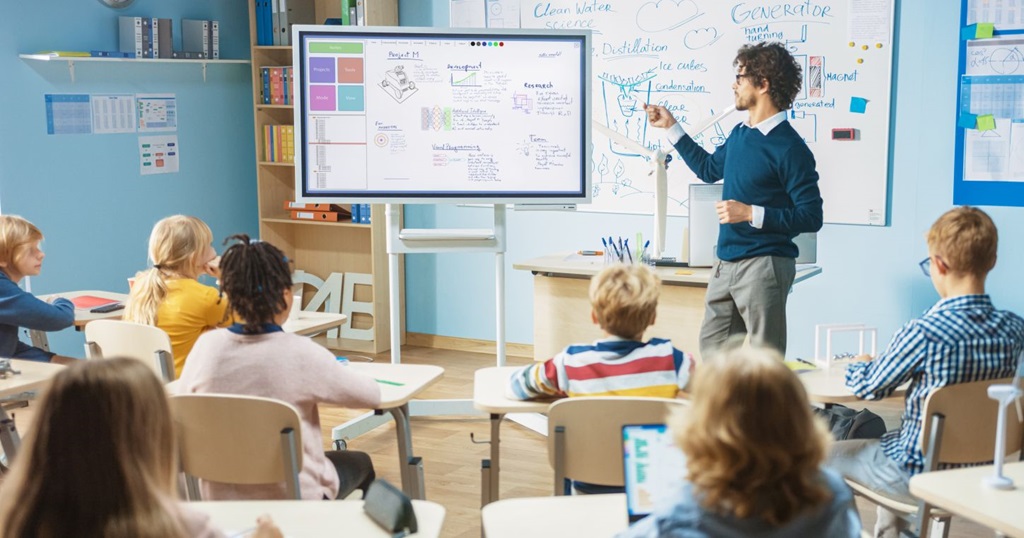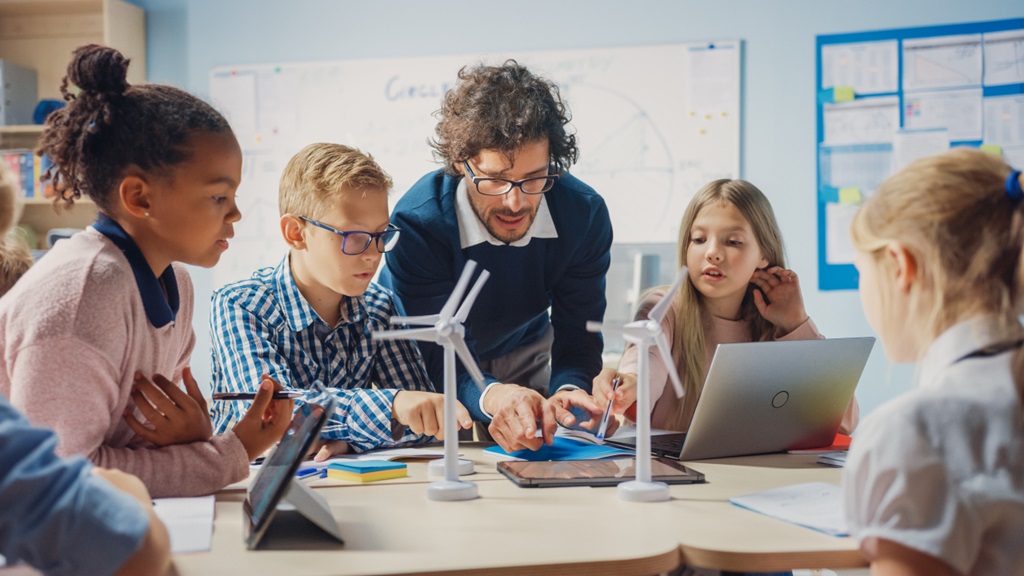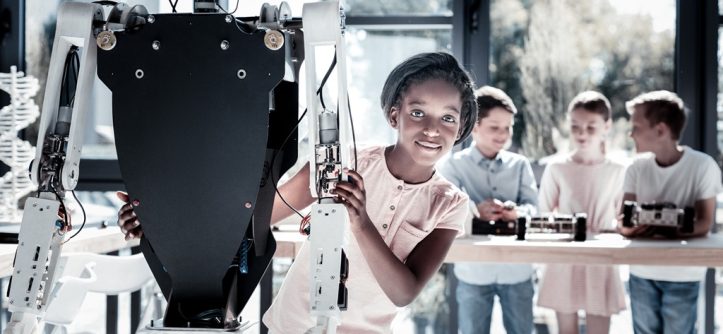In the ever-evolving landscape of education, technology stands as a dynamic force shaping the future of learning. This article delves into five transformative technology trends poised to revolutionize the educational sphere.
Education has long been regarded as a cornerstone of societal progress, and technology is playing an increasingly pivotal role in this domain. In an era characterized by digital advancements, it is crucial to explore how technology trends are influencing and enhancing the educational experience.
Virtual Reality (VR) in Education
Enhancing Learning Experiences
Virtual Reality (VR) is not just a gaming technology; it’s a powerful tool enriching educational experiences. Imagine students taking a virtual tour of ancient civilizations or exploring the depths of the ocean from the classroom. VR opens new dimensions for immersive learning.
Virtual Field Trips and Simulations
No longer restricted by geographical limitations, virtual field trips powered by VR transport students to places they might never physically visit. Simulations, from biology experiments to historical reenactments, bring subjects to life, fostering engagement and understanding.
Artificial Intelligence (AI) in Education

Personalized Learning
Artificial Intelligence tailors education to individual needs. Adaptive learning platforms powered by AI analyze students’ strengths and weaknesses, offering personalized lesson plans. This approach ensures that each student progresses at their optimal pace.
Intelligent Tutoring Systems
Gone are the days of one-size-fits-all teaching. Intelligent Tutoring Systems utilize AI algorithms to provide real-time feedback, guiding students through challenging concepts. This personalized support system enhances comprehension and retention.
Augmented Reality (AR) Applications
Interactive Learning Materials
Augmented Reality (AR) transforms traditional learning materials into interactive 3D experiences. Textbooks, when viewed through AR-enabled devices, come to life, making complex concepts more accessible and engaging for students.
Real-World Applications in Education
AR extends beyond the classroom, with educational apps allowing students to overlay information onto the physical world. Whether studying anatomy or physics, AR brings theoretical knowledge into practical contexts.
Online Learning Platforms
Accessibility and Flexibility
The rise of online learning platforms has democratized education, making it accessible to learners worldwide. With the flexibility of asynchronous learning, students can pursue education at their own pace, breaking down barriers to traditional learning.
Collaborative Learning Environments
Online platforms foster collaborative learning through discussion forums and group projects. Students from diverse backgrounds can share insights and collaborate, enriching the learning experience with varied perspectives.
Gamification in Education
Motivating Students Through Games
Gamification introduces game elements into educational activities, making learning enjoyable and motivating. Achievements, rewards, and friendly competition stimulate students’ intrinsic motivation, turning education into an engaging adventure.
Incorporating Elements of Play in Learning
By incorporating elements of play, educators can create an environment where failure is seen as an opportunity to learn, fostering resilience and a positive attitude toward challenges.
Internet of Things (IoT) in Educational Settings
Smart Classrooms and Connected Devices
The Internet of Things (IoT) connects devices in the classroom, creating smart learning environments. From interactive whiteboards to wearable devices tracking student engagement, IoT enhances the overall educational infrastructure.
Data-Driven Decision-Making
IoT generates valuable data that can inform educational decisions. From understanding students’ learning preferences to optimizing resource allocation, data-driven insights pave the way for continuous improvement.
Blended Learning Approaches

Combining Traditional and Online Methods
Blended learning combines face-to-face instruction with online resources. This approach leverages the strengths of both traditional and digital methods, offering a holistic learning experience.
Customizing Learning Experiences
Educators can tailor content to suit diverse learning styles, ensuring that each student benefits from a personalized and effective learning journey.
Enhanced Security Measures in EdTech
Safeguarding Student Data
As technology becomes integral to education, ensuring the security of student data is paramount. Strict measures and robust systems must be in place to protect sensitive information from potential threats.
Addressing Privacy Concerns
Balancing the benefits of technology with privacy concerns requires a delicate approach. Clear policies and transparent communication are essential to build trust among students, parents, and educators.
Adaptive Learning Technologies
Adapting to Individual Student Needs
Adaptive learning technologies adjust to students’ progress, providing additional support when needed. This approach fosters a growth mindset, encouraging students to embrace challenges as opportunities for improvement.
Continuous Assessment and Feedback
Real-time assessment tools offer immediate feedback, enabling students to track their progress and make necessary adjustments. This continuous feedback loop promotes a culture of ongoing improvement.
Future Career Readiness through Technology
Aligning Education with Industry Needs
Technology trends in education should align with the skills demanded by the job market. Integrating industry-relevant technologies prepares students for future careers, ensuring they are well-equipped for the workforce.
Developing Relevant Skills
From coding to digital literacy, incorporating technology into education equips students with skills vital for the digital age. This proactive approach ensures graduates are ready for the challenges of an ever-evolving job market.
Overcoming Challenges in Implementing Technology
Resistance to Change
Embracing technology in education often faces resistance from traditionalists. Acknowledging concerns and providing adequate support and training can ease the transition and garner acceptance.
Infrastructure Limitations
Not all educational institutions have equal access to technology. Bridging this gap requires strategic investment and collaboration between governments, institutions, and technology providers.
Case Studies
Successful Integration of Technology in Education
Highlighting real-world examples where technology has positively impacted education reinforces the practical benefits. Case studies showcase the transformative potential of these innovations.
The Role of Teachers in Tech-Driven Education

Facilitating Technology Use
Teachers play a pivotal role in bridging the gap between technology and education. Professional development programs empower educators to effectively integrate technology into their teaching methods.
Continuous Professional Development
Given the rapid evolution of technology, continuous professional development ensures educators stay abreast of the latest advancements. This ongoing learning journey benefits both educators and students.
Conclusion
In conclusion, the intersection of technology and education is shaping a future where learning is dynamic, personalized, and accessible. Embracing these trends not only prepares students for the digital age but also enhances the overall educational experience.
FAQs
-
How can virtual reality benefit students in the future of education?
- Virtual reality enhances engagement and understanding by providing immersive learning experiences.
-
What role does artificial intelligence play in personalized learning?
- AI tailors educational content to individual students, ensuring a personalized learning journey.
-
How does gamification make learning more enjoyable?
- Gamification introduces elements of play, motivating students through achievements and rewards.
-
Why is the Internet of Things important future of education?
- IoT creates smart learning environments and generates data for informed decision-making.
-
How can teachers overcome resistance to technology in education?
- Acknowledging concerns and providing support and training can ease the transition to tech-driven education.





Leave a Reply